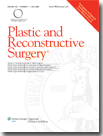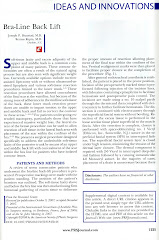Tummy tuck pain: What to expect and how to make the best of it.
Many men and women are candidates for a tummy tuck procedure after either significant weight loss or after child birth. One of the main issues that many patients state made them wait to get a tummy tuck procedure is the concern of the pain and recovery associated. Since knowledge is power lets discuss what one can expect following a tummy tuck as well as what can be done to make that recovery experience a little better.
How much pain should on expect after a tummy tuck?
Lets face it, a well performed tummy tuck with abdominal muscle tightening, liposuction of the flanks, and removal of the excess abdominal loose skin will result in some discomfort. Most of the pain or discomfort associated with a tummy tuck is no related to the incision, however. Once an incision is sealed it tends not to cause too much discomfort. Most of the discomfort that patients report is often from the abdominal wall tightening. Abdominal wall tightening does not involve cutting muscles. This is an important thing to know and remember because part of "pain" is mental. If you feel like you have done the most intense abdominal workout and know that nothing bad is happening you will not have the fear component associated with your discomfort and will know that it is largely tightness and soreness that will get better each day.
On a scale from 1-to-10, most patient will rate a tummy tuck in the 6-8 range the first week, 3-5 range the second week, and less thereafter. This of course variable from patient to patient and I do consistently get several patients each month that are smiling, seem comfortable, and largely report that its not as bad as they thought it would be even in the first week after their tummy tuck. Most patient however, do find the first week a little challenging but its that first week that is the hardest.
How to make the best of the tummy tuck recovery?
Knowing what to expect, what is happening, and not being afraid of the unknown are key. A trusting relationship with your plastic surgeon will be important. I tell my patients that I will always be looking out for anything that can signal healing issues. Until then, just know that everything is healing well and there is nothing to fear.
Most of what can be done to make this process better is in the surgeons hands. In addition to education numbing medication and proper dressings can make a difference. Placement of long acting numbing medication deep in the tissues can help a lot in the first few days after a tummy tuck. Some surgeon also use a pain pump routinely. I leave the pain pump as an option for my patients as some patients do not want either the extra cost or the extra tube and bulb that goes along with it. A properly placed abdominal binder and drain can also help reduce the discomfort after surgery. Finally, pain medications. The right combination of pain medications can help make the recovery process seem less intense. Both narcotic and non-narcotic medications as well as muscle relaxer type medications can be helpful.
A few other details that may be of help are: having a recliner to sleep in and using a toilet seat booster to help when having to use the bathroom. Of course, having a supportive friend or family member to help you through this journey is also recommended.
So,......tummy tuck surgery is intense but when performed properly the discomfort of the recovery process is well worth the final results. There are a few things that both you and your plastic surgeon can do to make this process better as discussed above and education of what is and is not occurring (knowledge is power) is right up there with the most important of them.
Good luck on your tummy tuck journey.
All the best,
Dr. Remus Repta
Phoenix/Scottsdale, AZ
Many men and women are candidates for a tummy tuck procedure after either significant weight loss or after child birth. One of the main issues that many patients state made them wait to get a tummy tuck procedure is the concern of the pain and recovery associated. Since knowledge is power lets discuss what one can expect following a tummy tuck as well as what can be done to make that recovery experience a little better.
How much pain should on expect after a tummy tuck?
Lets face it, a well performed tummy tuck with abdominal muscle tightening, liposuction of the flanks, and removal of the excess abdominal loose skin will result in some discomfort. Most of the pain or discomfort associated with a tummy tuck is no related to the incision, however. Once an incision is sealed it tends not to cause too much discomfort. Most of the discomfort that patients report is often from the abdominal wall tightening. Abdominal wall tightening does not involve cutting muscles. This is an important thing to know and remember because part of "pain" is mental. If you feel like you have done the most intense abdominal workout and know that nothing bad is happening you will not have the fear component associated with your discomfort and will know that it is largely tightness and soreness that will get better each day.
On a scale from 1-to-10, most patient will rate a tummy tuck in the 6-8 range the first week, 3-5 range the second week, and less thereafter. This of course variable from patient to patient and I do consistently get several patients each month that are smiling, seem comfortable, and largely report that its not as bad as they thought it would be even in the first week after their tummy tuck. Most patient however, do find the first week a little challenging but its that first week that is the hardest.
How to make the best of the tummy tuck recovery?
Knowing what to expect, what is happening, and not being afraid of the unknown are key. A trusting relationship with your plastic surgeon will be important. I tell my patients that I will always be looking out for anything that can signal healing issues. Until then, just know that everything is healing well and there is nothing to fear.
Most of what can be done to make this process better is in the surgeons hands. In addition to education numbing medication and proper dressings can make a difference. Placement of long acting numbing medication deep in the tissues can help a lot in the first few days after a tummy tuck. Some surgeon also use a pain pump routinely. I leave the pain pump as an option for my patients as some patients do not want either the extra cost or the extra tube and bulb that goes along with it. A properly placed abdominal binder and drain can also help reduce the discomfort after surgery. Finally, pain medications. The right combination of pain medications can help make the recovery process seem less intense. Both narcotic and non-narcotic medications as well as muscle relaxer type medications can be helpful.
A few other details that may be of help are: having a recliner to sleep in and using a toilet seat booster to help when having to use the bathroom. Of course, having a supportive friend or family member to help you through this journey is also recommended.
So,......tummy tuck surgery is intense but when performed properly the discomfort of the recovery process is well worth the final results. There are a few things that both you and your plastic surgeon can do to make this process better as discussed above and education of what is and is not occurring (knowledge is power) is right up there with the most important of them.
Good luck on your tummy tuck journey.
All the best,
Dr. Remus Repta
Phoenix/Scottsdale, AZ







